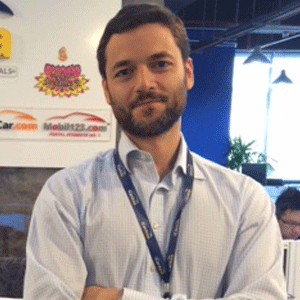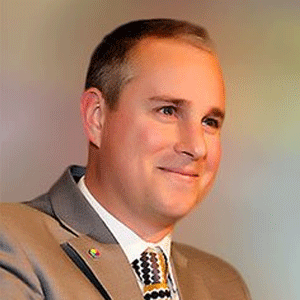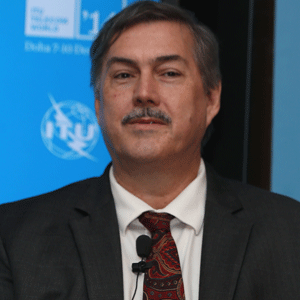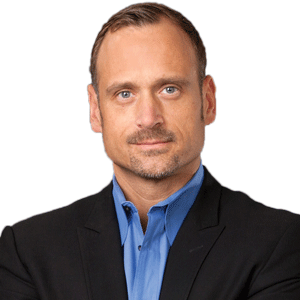THANK YOU FOR SUBSCRIBING

Pedro Sttau,
The Conscious Nature of Execution
Execution is important, but not in the way many businesses perceive it to be.
Not long ago it seemed relatively logical going into a seemingly endless planning session to define a plan that would deliver a strategic goal within three to six months. A Project team would be put in place, estimations would be done,
top-level risks assessed and a plan would be drafted with the corresponding milestones and goals that would ultimately deliver the business value that was expected.
Success would be dictated by the project team’s ability to execute the plan on time and scope, the moment the project kicked off it was as if the project team got into a plane, disconnected all flight instrumentation and relied purely on its own ability to keep the plain in the air hopping that whatever external events like rough weather would not deviate them too much from course, the problem is that Murphy's Law seems to be very fond of IT folks, and as we all know, in IT anything that could go wrong eventual does, there is always bad weather.
When delivery is the main KPI, project teams react to change by deflection or mitigation, they have little preparation to adapt to change, adaptation may require reassessing the destination completely or just change path but if the main purpose of the journey is to get to a predetermined destination at all costs, everything else is accessory.
What leaders need to understand is that change will happen, whether organizations and individuals like it or not, there is no process or person that will stop it.
The ability to deliver successfully is not a good measure for success.
Adaptable companies tend to have a good balance between execution and context. Healthy execution is conscious of changes in context, it moves at a good steady predictable pace without rushing. It's sensitive to its surroundings, adapting effortlessly to changes, and it takes a holistic pragmatic approach by being able at all times to reevaluate the value of the path and destination.
Adaptability
In nature, adaptability is innate and instinctive, organizations don’t work quite the same way. Traditionally, companies see change as something that needs to be managed, logged, mitigated, an inconvenient burden that should to be avoided at all costs by putting process in place that challenges change instead of embracing it. This level of control is nothing but an illusion.
A CIO may be able to control the way his company responds to change, but no one can fully control change itself and how impactful it could be.
Just as adaptable thriving organisms need an ecosystem that promotes change in order to succeed, CIOs need to create ecosystems that embrace and promote change while at the same time delivering results that make a real difference to the organization.
By focusing on an organic framework that not only is able to scale but is fundamentally able to adapt to different contexts and circumstances such as changes in competitive landscape,
The CIO’s job shifts from implementing specific methodologies to implementing principles, the methods will naturally settle if the company's culture is ready and if the right leadership is in place.
The DNA of Organic mutable organizations
Organizations that respond well to change always tend to have very similar traits, many of these traits are identifiable on the surface and are usually referred to terms like entrepreneurship, innovation, but the reality is that these are all consequences of companies made of the right stuff.
IT is the Business
Agile Adaptable delivery begins with a fundamental cultural shift that removes all boundaries between IT and the business, in the vast majority of companies, the business cannot operate without IT and IT exists to support and build business value, therefore logically IT is the business.
CIOs need to able to break the artificial barrier between IT as a service provider and the rest of the business. If IT is treated as a subservient department, that is exactly what the business will get back.
In a highly adaptable organization, IT is seen as much as a business role as Sales, Marketing or Operations, at my iCarAsia our Product teams are multidisciplinary and focused on product holistically, it's not about technology, it's about making a collective significant contribution to the business.
Start with the Problem
Great companies want to solve problems that are worth solving.
Purpose begins with a well defined problem that is presented to teams as a challenge not a set of preordained solutions. A challenge is a question; teams need to be empowered to meet challenges not merely to execute solutions.
The ecosystem needs to empower individuals to meet these challenges by taking the path of least resistance by choosing the quickest way to prove/disprove hypotheses before investing resources into something that has not graduated from being a question.
Innovation does not typically come from Eureka moments or unpredictable flashes of genius inspiration; it comes from an ecosystem that nourishes freedom, mastery and autonomy, a place where individuals are able to capitalize validated learning by focusing on trying to get answers to questions.
This will reduce waste and bring down the collective frustration and disappointment of building products that no one wants to use. Talented individuals want to work towards something meaningful, greater than themselves; it's up to the leadership to create a safe environment for this to happen.
Hire for Culture first
Great people want to work for companies that are solving problems worth solving.
Not everyone will thrive in an constant evolving ecosystem. Change is difficult, embracing it on a daily basis requires a very special type of person that is comfortable with having to constantly adapt to new circumstances and environments.
This is why hiring for culture alignment first is so important. That is not to say that talent and technical aptitude are not relevant, however when there is no cultural fit there will always be a gap between what is expected of someone and what the individual can bring can deliver.
Organizations with a purpose and that is driven by principles need to hire people that can represent something, the traditional relationship between employer and employee does not conform to today’s volatile, constant evolving context.
Hiring for people that embrace change is key, the ability to adapt and learn are fundamental traits for adaptable organizations. At iCar we no longer hire Engineers that solely work on specific technologies, we hire full stack engineers that may not have the experience with a specific tech, but are driven to constantly learn new things, adapt and build awesome software.
Conscious Focus
AS CIO our main focus should be putting in place frameworks that narrow and eventually remove any barrier between the vision and what is being executed by the product teams.
A CEO should be able to pick up any release plan and immediately identify a clear alignment between what is being delivered and the overall business direction and strategy.
The key thing is that the Leadership needs to focus on providing a clear steer trusting that the talent that they have hired will ultimately choose the right path to get us there.
John Nash’s “Game Theory” suggests that with clear direction, teams will naturally self organize and focus on what is best for themselves individually and the ecosystem without having to be told.
As Leaders we need to focus on creating the right environment for living organisms to self organize and get out of the way.
Weekly Brief
I agree We use cookies on this website to enhance your user experience. By clicking any link on this page you are giving your consent for us to set cookies. More info
Read Also
Artificial Intelligence - Myths And Truths
Sustainable Future through Innovative Technology Solutions
The Future Relies on Augmented AI
Digitalization with the use of digital technologies/Improving business through digital technologies
How Marco's Pizza Leaned On Technology To Succeed Amid The Pandemic By Quickly Pivoting To Contact-Free Delivery And Curbside Carryout
Bunnings Diy Digital Transformation
For a Smarter City: Trust the Data, Ignore the Hype
Smart Community Innovation for the Post Pandemic





















